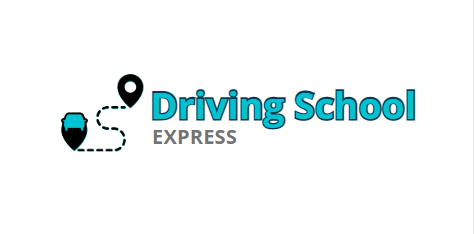Have you ever wondered about the driver’s license classifications in Utah…
What is the difference between a Class A and Class B license?
What license should I get if I want to drive my car to work?
Well, this Utah driver’s license classifications guide can answer that for you.
Here, we’ll look at what each class can operate, what the regular license is, and the requirements for each license type.
Plus, we’ll include an FAQ section for those that still have some questions.
So buckle up and let’s go!
Driver’s License Classes in Utah
- Class A (Commercial)
A Class A commercial license allows you to operate any combination of vehicles with a gross combination weight rating (GCWR) of 26,001 pounds or more, provided the gross vehicle weight rating (GVWR) of the vehicle it is towing is more than 10,000 pounds.
- Class B (Commercial)
A Class B commercial license allows you to operate a single or any combination of vehicles with a GVWR of more than 26,000 pounds, pulling a trailer, or any vehicle with a GVWR of no more than 10,000 pounds.
- Class C (Commercial)
A Class C commercial license allows you to operate a single or any combination of vehicles that transport 16 or more passengers (including the driver) or carries hazardous materials.
- Class D
Class D is what Utah calls the regular license. It allows the holder to operate common cars, recreational vehicles with a GVWR under 26,000 pounds, a giant van, or a minibus with a seating capacity of fewer than 15 people. It also includes other vehicles that do not fall within the definition of the above classes and are not for commercial use, including motorcycles (must get an endorsement for this, though).
How to Get a Class D Driver’s License in Utah
Depending on your age, different rules apply when you are seeking a regular driver’s license in Utah.
If you are 18 years old, you will need to hold a learner’s permit for 90 days AND complete a driver’s education course. However, if you are at least 19 years old, you may only do one requirement, hold a permit or complete a driver’s ed course.
Below are the steps on how to apply for a driver’s license as an adult:
- Visit your local DMV office.
- Accomplish and submit the UT driving license application form (provided in the DMV office).
- Provide the required documents (proof of identity, proof of residency in UT, and social security number).
- Pay the relevant fees.
Teen Driver’s License Requirements
Teens aged 15 to 18, who are seeking a license in Utah, must first obtain a learner’s permit.
Below are the requirements for a learner’s permit:
- Apply in person at your local DMV, and submit your application form together with other required documents listed below. Your parent or legal guardian needs to sign off on your form.
- Proof of identification
- Proof of residency
- Proof of Social Security number
- Pass the vision test.
- Have your photo taken.
- Pass the knowledge test.
- Pay the relevant fees.
You must hold your permit for at least six months and be at least 16 years old before you qualify for a provisional license. Afterward, you need to complete the following steps:
- Complete a state-approved driver education program.
- Pass the Traffic and Safety Trends test.
- Complete the application form for the provisional license, and have it signed by your parent or guardian.
- Have your photo taken.
- Surrender your learner’s permit.
- Pass the vision screening.
- Complete 40 hours of documented driving practice, 10 of which must be done at night.
- Pass the road skills test.
- Pay the applicable fees.
If you turn 18 before the required six-month holding period of the learner’s permit ends, however, you may proceed to apply for a full Class D license (requirements listed above).
How to Get a Commercial Driver’s License in Utah?
To be eligible to apply for a CDL in Utah, you must first obtain a Commercial Learner’s Permit (CLP).
To secure a CLP, you must satisfy the following requirements:
- You must have a valid regular driver’s license and a current DoT medical card.
- You must have had your Class D license for at least a year.
- You must be at least 18 for intrastate transport and 21 for interstate transport.
- Meet the medical requirements of the Federal Motor Carrier Safety Regulations.
- Complete a self-certification form.
- Complete and submit an application form together with proofs of identity, legal presence, residency, and social security number at any Utah Driver License Office.
- Pass the physical exam, vision screening, color blindness, and CDL written knowledge tests.
- Pay the relevant fees.
Once you pass the applicable tests, you will receive the CLP, which will be valid for six months from the date of issue. You may renew it once every two years.
The state requires all commercial driver’s license applicants to surrender their valid Class D driver’s license upon receiving the permit.
Once you are ready, you may proceed to schedule a skills test at any Driver’s License Office or state-certified third-party testing facility. The test consists of three parts – pre-trip inspection, basic controls test, and road skills test.
After successful completion of the skills test, you will receive your CDL.
Utah Driver’s License Classification FAQs
What is the best online driver’s ed in Utah?
This school is the best online driver’s ed school in Utah, and well, in most US states. The school has been around for more than 15 years. Through those years, it has improved and updated its coursework. Today, it has one of the most interactive driver’s ed courses in the country, featuring rich graphics, high-quality videos, and 3D animations.

Its complete Utah teen package consists of an online driver’s ed and in-car training with its partner provider, A-1 Driving School. The bundle meets all your permit requirements and even includes free online practice tests. This ultimate package is temporarily unavailable at the moment, but you can always reach out to DriversEd to confirm once they begin offering the package again.
What are the grounds for disqualification from CDL in Utah?
Below are some of the violations that may lead to a minimum of one-year disqualification from CDL:
- Driving under the influence of alcohol, drugs, a controlled substance, and the like
- Failing to provide reasonable assistance when involved in an accident, or leaving the scene of an accident
- Refusal to submit to a test to determine alcohol concentration in the blood, breath, or urine
Does Utah have a Class M license?
No, Utah does not issue separate licenses for motorcycle use, but a driver with a regular license may apply for a motorcycle endorsement.
Conclusion
Now that you know the ABCs of Utah driver’s license classifications, you already know which license class you need to apply for.
If you’re simply going to drive a common car or a pick-up truck to work, you will need a regular license, otherwise known as Class D.
If you will be operating a larger vehicle, for instance, a school bus, you will most likely need a Class C commercial license.
